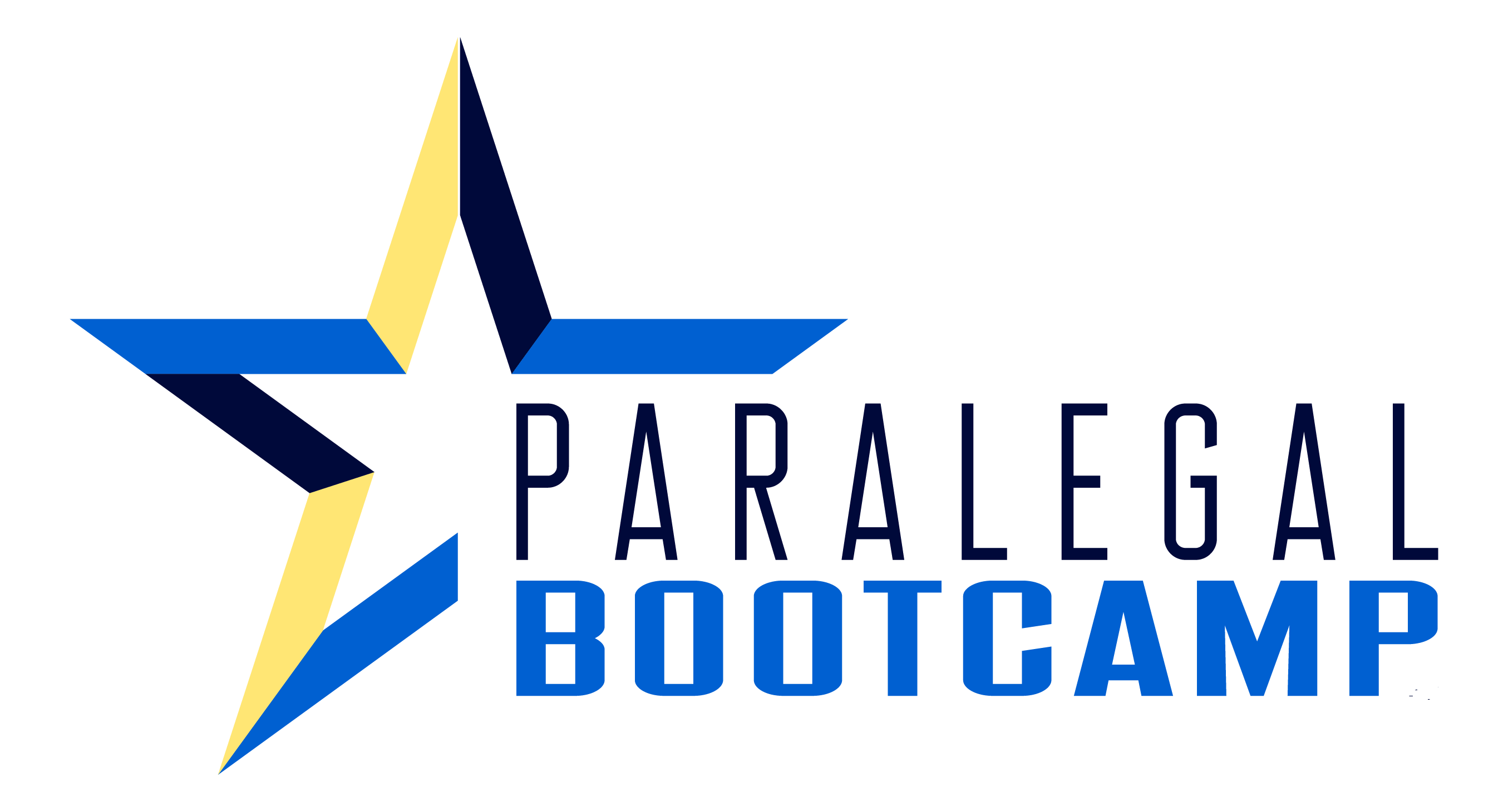Paralegal Technology Skills are Not Just “Optional”
There is no doubt that technology is changing the paralegal profession. Gone are the days when a paralegal sifts through dozens of books to find that key case to cite in a brief. We no longer fight traffic on the way to the clerk’s office for that last-minute filing. Document productions are paperless and kept in the cloud. For many of the tasks that used to take hours, we can now say “there’s an app for that.”
Are these advances in technology making a paralegal’s job easier or are they going to reduce the lawyer’s need to hire as many paralegals? The answer depends on whether technology is your friend or foe. The answer also depends on whether you are the button pusher or the master of the technology.
What is a Button Pusher?
A “button pusher” is someone who only learns the basics of how to operate the technology or someone who resists technology altogether. For example, during an e-discovery project, they are a member of a document review team that clicks the box for “responsive” or “non-responsive” and moves on to the next document. They have an instruction manual to refer to for questions and their work is being quality control checked by someone above them.
Compare that to the e-discovery paralegal who is leading the review team of contract attorneys, using her project management skills and training attorneys on how to use the technology. This paralegal oversees quality control and negotiates pricing with outside vendors. The attorneys rely on this paralegal for making recommendations on which technology tool fits best with this project because this paralegal has taken the time to get to know the pros and cons of the various e-discovery technology options.
Become a Master of Technology
To become the master of technology, a paralegal should strive to make sure they know more about their practice group’s technology than any of the attorneys on their team. In doing so, the paralegal is known as the “go-to” person on the team for all technology-related issues and has the opportunity to work on higher-level assignments. Lawyers are not going to take paralegal jobs away.
Technology is not going to take paralegal jobs away. A paralegal’s lack of technology skills is what will take paralegal jobs away.
When asked about how technology will be changing the role of a paralegal, NALA’s President, Cassandra Oliver, ACP, believes that paralegals can use the technology changes to increase their role. “I anticipate that advances in technology will continue to influence changes in the role and skill requirements for paralegals. As employers of paralegals leverage their options to better serve clients, their use of technology increases and an incentive is the outcome of increased productivity. Advances in technology change how legal services can be accessed and delivered, and I think the responsibilities of paralegals will continue to expand. As a result, paralegals’ roles and job descriptions will continue to evolve.” Oliver further went on to say “the law schools’ incorporating more technology courses is consistent with the courts utilizing technology more and bar associations requiring lawyers to stay abreast of relevant technology. I see paralegal certificate programs doing likewise. A tech-savvy paralegal will be better positioned in our competitive job market.”
How will the future of the paralegal profession be affected by technology?
1. Paralegal Technology in Hiring Decisions
Along with paralegal technology advances in how we perform our work, there is a technology that helps an employer make hiring and promotion decisions for their paralegals. Some recruiters and employers have been using this technology for many years to test potential candidates on their basic technology competence during the interview process. Most of the testing currently relates to Microsoft Office applications. However, paralegals should be prepared to be tested on other software applications if they are interviewing for a position that requires having experience working with a specific technology.
 Cynthia Laberge, attorney and Paralegal Manager at Meyers Nave Riback Silver and Wilson in California, thinks that is something paralegals should be prepared for. “I believe more firms are moving toward testing applicants on their technology skills before offering a position. It is not uncommon today to see technology skills advertised as ‘must-haves’.” Technology skills are important, but as Laberge cautioned, “Technology skills are just one part of the hiring plan. In addition to having the requisite technical ‘know-how’ to do the job, paralegals also have to be able to think critically and communicate confidently. This has never been the case more than today. The most successful paralegals I have known will take their jobs to the next level. They look at how the work is done, think of ways to improve the process, and confidently communicate how to do that.”
Cynthia Laberge, attorney and Paralegal Manager at Meyers Nave Riback Silver and Wilson in California, thinks that is something paralegals should be prepared for. “I believe more firms are moving toward testing applicants on their technology skills before offering a position. It is not uncommon today to see technology skills advertised as ‘must-haves’.” Technology skills are important, but as Laberge cautioned, “Technology skills are just one part of the hiring plan. In addition to having the requisite technical ‘know-how’ to do the job, paralegals also have to be able to think critically and communicate confidently. This has never been the case more than today. The most successful paralegals I have known will take their jobs to the next level. They look at how the work is done, think of ways to improve the process, and confidently communicate how to do that.”
Hallie Pinstein, Senior Director of Recruiting at Cambridge Professional Group in Atlanta, agrees that a paralegal’s experience is weighted as heavily as technical skills in the hiring process. “It is more experience in a particular practice area that remains the most important prerequisite. However, paralegals should keep up with the latest technology which would include document management software.”
2. Clients Looking Closer at a Law Firm’s Technology Competence
 Legal Technology Audits (LTAs) were pioneered by Casey Flaherty who was a former law firm associate and later as in-house counsel at Kia Motors. The LTAs started as a tool for corporate clients to assess how efficient their law firms were with basic technology. Ideally, the LTA would point out areas where the law firm could train their attorneys and staff on specific areas to increase their technical competence. According to Monica L. Sandler in the ABA Journal’s Legal Rebel blog, “Casey was motivated by what he witnessed as outside counsel: institutionalized waste driven by poor utilization of standard, labor-saving features built into everyday software (e.g., Outlook, Word, Excel). Casey created an assessment based on labor-intensive assignments commonly given to junior attorneys and paralegals.”In other words, if it takes someone at the law firm an extra hour to finalize a brief because they’re manually updating the table of contents, why should the client have to pay for that extra hour? Even though the creation of the LTA was originally for clients to measure their law firm’s technical competence, it is not limited to corporate counsel using them. If more of the law firm clients start using some type of LTA to measure the technical efficiency of the law firm they are hiring, we could see law firms using those same LTAs in their hiring and promotion decisions to ensure the law firm will pass a client-administered LTA.NFPA’s Vice President and Director of Profession Development, Allen F. Mihecoby, CLAS, RP has seen the development of this testing from the clients’ side. “We have seen the development of technology audits – a computerized evaluation of certain technical skills with word processing, spreadsheets, and presentation software. Many corporations have adopted these tech audits and ask their law firm business partners to ensure that their employees go through the testing and achieve a certain level of proficiency.” Mihecoby, who is an in-house paralegal, adds “I understand the logic behind this – clients want to pay for the highest quality of legal services at an efficient rate. The client needs an extrinsic method to evaluate the software skills of those working on its matters. If it takes a timekeeper two hours on a project, with an hour of that being unfamiliar with technology, it’s unfair to the client.”Clients are also pushing for more efficiency with project management. Ten years ago, law firms were staffing and managing document review projects in a conference room filled with a mix of paralegals and associates. Fast forward to 2017 and a document review room looks completely different. Many times, it is offsite at a company that specializes in managed review services, has a project manager and the room is filled with contract attorneys (not paralegals). The managed review services company was most likely hired directly by the corporate client who negotiated a national contract with them. Instead of paying law firm standard hourly rates of $100 – $350 for a room full of paralegals and associates, clients are outsourcing the review project because they are only being charged $35 – $60 per hour for licensed, barred attorneys to do the review.How can a paralegal compete with an attorney to get work as a document reviewer? The better question is: why would a paralegal want to compete for that type of work? As technology continues to advance, it will be those button-pushers who will be fighting for less available positions because technology will be able to do much of what they are doing. The technology is already available through technology-assisted-review platforms and a variety of other e-discovery applications. However, technology cannot run itself. If you are the master of technology, you will ensure job security and most likely, higher job satisfaction than you would as a button pusher.
Legal Technology Audits (LTAs) were pioneered by Casey Flaherty who was a former law firm associate and later as in-house counsel at Kia Motors. The LTAs started as a tool for corporate clients to assess how efficient their law firms were with basic technology. Ideally, the LTA would point out areas where the law firm could train their attorneys and staff on specific areas to increase their technical competence. According to Monica L. Sandler in the ABA Journal’s Legal Rebel blog, “Casey was motivated by what he witnessed as outside counsel: institutionalized waste driven by poor utilization of standard, labor-saving features built into everyday software (e.g., Outlook, Word, Excel). Casey created an assessment based on labor-intensive assignments commonly given to junior attorneys and paralegals.”In other words, if it takes someone at the law firm an extra hour to finalize a brief because they’re manually updating the table of contents, why should the client have to pay for that extra hour? Even though the creation of the LTA was originally for clients to measure their law firm’s technical competence, it is not limited to corporate counsel using them. If more of the law firm clients start using some type of LTA to measure the technical efficiency of the law firm they are hiring, we could see law firms using those same LTAs in their hiring and promotion decisions to ensure the law firm will pass a client-administered LTA.NFPA’s Vice President and Director of Profession Development, Allen F. Mihecoby, CLAS, RP has seen the development of this testing from the clients’ side. “We have seen the development of technology audits – a computerized evaluation of certain technical skills with word processing, spreadsheets, and presentation software. Many corporations have adopted these tech audits and ask their law firm business partners to ensure that their employees go through the testing and achieve a certain level of proficiency.” Mihecoby, who is an in-house paralegal, adds “I understand the logic behind this – clients want to pay for the highest quality of legal services at an efficient rate. The client needs an extrinsic method to evaluate the software skills of those working on its matters. If it takes a timekeeper two hours on a project, with an hour of that being unfamiliar with technology, it’s unfair to the client.”Clients are also pushing for more efficiency with project management. Ten years ago, law firms were staffing and managing document review projects in a conference room filled with a mix of paralegals and associates. Fast forward to 2017 and a document review room looks completely different. Many times, it is offsite at a company that specializes in managed review services, has a project manager and the room is filled with contract attorneys (not paralegals). The managed review services company was most likely hired directly by the corporate client who negotiated a national contract with them. Instead of paying law firm standard hourly rates of $100 – $350 for a room full of paralegals and associates, clients are outsourcing the review project because they are only being charged $35 – $60 per hour for licensed, barred attorneys to do the review.How can a paralegal compete with an attorney to get work as a document reviewer? The better question is: why would a paralegal want to compete for that type of work? As technology continues to advance, it will be those button-pushers who will be fighting for less available positions because technology will be able to do much of what they are doing. The technology is already available through technology-assisted-review platforms and a variety of other e-discovery applications. However, technology cannot run itself. If you are the master of technology, you will ensure job security and most likely, higher job satisfaction than you would as a button pusher.
3. How Paralegal Technology is Affecting Changes to CLE Requirements
Several years ago, bar associations started to recognize the importance of technology competence in lawyers. Since paralegals work directly for lawyers, we can expect those changes to come to the paralegal profession as well. 
In 2012, the ABA’s House of Delegates voted to amend Comment 8 to Model Rule 1.1, which pertains to competence, so that it specifically addresses technology competence: To maintain the requisite knowledge and skill, a lawyer should keep abreast of changes in the law and its practice, including the benefits and risks associated with relevant technology, engage in continuing study and education and comply with all continuing legal education requirements to which the lawyer is subject. (Emphasis added.) Since that time, at least twenty-six state bar associations have adopted the amended Model Rule.The Florida Bar went even further with their Amendment to Rule 6-10.3(b) which now requires 3 hours of technology CLE credits as part of a lawyer’s continuing education requirements. (http://floridabar.org/CLE). Since that time, 39 other states have joined in to adopt the ABA’s opinion on technical competence among lawyers.Recently, the Florida Bar’s FRP requirements also included separate paralegal technology credits. In addition to CLE requirements, the ABA has formed subcommittees to look specifically at technology in the practice of law. Cynthia Laberge serves as Co-Chair on the ABA’s Legal Project Management Technology Subcommittee that meets once a month with members participating from all parts of the U.S. and overseas. The subcommittee is actively working on addressing how technology is impacting the practice of law. The Legal Project Management section also has a Law School Curriculum Subcommittee that is working on a Legal Project Management curriculum for law schools.Laberge and other subcommittee members are preparing a matrix of professionally reviewed Legal Project Management software to provide a starting point for anyone interested in knowing more about such tools. When asked if she thought that paralegal associations could benefit from having similar technology subcommittees, Laberge added, “While creating a subcommittee to study these issues at national paralegal associations is certainly a fine idea, if paralegals have an interest in the work of the ABA, they are always welcome to join us as well!”
If paralegals want to stay ahead of the curve with technology, they are not waiting to be told that they must get a certain number of technology credits each year to maintain certification. Doing the bare minimum because it is mandated just keeps someone relevant. We put together a chart of Paralegal CLE by State. The tech-savvy paralegals are not waiting for someone to tell them to get the training and they are not waiting for their employer to provide the training. One of the great things about technology advances is that technology has given us more opportunities to get training.
4. Changes to How Paralegals Get Access to Continuing Education
When I started my paralegal career in the early 90s, the only option for keeping up with paralegal technology trends was to wait for a conference to come to my city, drive to a nearby larger city or sit through live vendor demos that were more like sales pitches than education. Thanks to the changes in learning technology, paralegals now have more options when it comes to learning new skills.
Paralegals now have access to learn just about anything they desire from anywhere in the world. With e-learning technology, paralegals can now increase any skill set from the comfort of their own office, home, or even on the bus ride into the office. E-learning is not the same as the audiobook and DVD courses we used to have to endure a few years back. They are interactive training programs that engage the learner. Even if you prefer live training, I would urge you to look at e-learning options when you are trying to get up to speed on technology changes in your specialty.
With e-learning technology, paralegals can now increase any skill set from the comfort of their own office, home, or even on the bus ride into the office. E-learning is not the same as the audiobook and DVD courses we used to have to endure a few years back. They are interactive training programs that engage the learner. Even if you prefer live training, I would urge you to look at e-learning options when you are trying to get up to speed on technology changes in your specialty.
Learn about Paralegal Roles in Other Countries.
In addition to e-learning from your continuing education service providers, there are other options for paralegal technology training:
- Search YouTube for training videos on that technology application.
- Suggest the topic to your local paralegal association for a vendor to present a CLE-approved presentation at the association’s next event. (Even if you don’t need CLE credit, if the event is CLE-approved then you can be assured that it will be more about the content and less about the sales pitch.)
- Online support forums about that technology application.
- Your local paralegal school’s continuing education courses.
- The software company’s website.
- The vendor reselling software/technology.
For example, if you are a litigation paralegal who wants to learn how to use Relativity, one of the most common e-discovery review platforms, there are over 12 hours of free training videos readily available on their website. (https://www.kcura.com/relativity/ediscovery-resources/training/) Most software companies and legal service providers are happy to provide you with the training because they know that the more you know about how to use the software, the more likely you will be to get the most out of the software and continue using it. Allen Mihecoby agrees that a good resource for getting additional technology training can be your vendors. “A recent trend I’ve noticed in the corporate world are e-signatures and electronic medallion guarantees. My legal support vendors/business partners provided me with advance notice of these changes as well as the necessary information to be ready for their implementation. A quick call to the vendor can save you countless hours of time, growing pains, and possible embarrassment for a wrong turn.”
Mihecoby also thinks that one of the most underutilized free services is the built-in help programs for most software programs. “They typically have step-by-step tutorials as well as segments on ‘what’s changed since the last version.’ And let’s not forget YouTube videos, which is a way to crowd share our knowledge to assist colleagues.” While the technology continues to change for the paralegal profession, so does the access to technology that we can use to keep up with those changes.
As the famous Stewart Brand quote reads: “Once a new technology rolls over you, if you’re not part of the steamroller, you’re part of the road.”
Whether you view technology as a friend or a foe to the profession, there is no doubt that it is not just “here to stay,” rather, it is an integral part of our profession and continually changing the role of a paralegal. If we embrace those changes, stay ahead of the curve and master the technology, we will see an expanded role and more opportunities for the paralegal profession.
Meet the Author

Ann Pearson is the Founder of the Paralegal Boot Camp, and host of the Paralegals on Fire! Podcast Show, and passionate about promoting the paralegal profession.
Ann spent 20 years working as a paralegal manager and a litigation paralegal before opening the Paralegal Boot Camp in 2010.
Ann’s training programs focus on adding immediate value to a paralegal’s career and bridging the gap between what a paralegal learns in school and what they actually do on the job.
Visit the About Us Page to learn more about why Ann started the Paralegal Boot Camp.
E-discovery Boot Camp
E-discovery skills are no longer on that list of “preferred” skills when employers are hiring litigation paralegals. These skills are required now.
Don’t limit your future career security by not knowing how to manage e-discovery projects.
This e-discovery training program will help you become a master at e-discovery project management in just 5 hours!


























